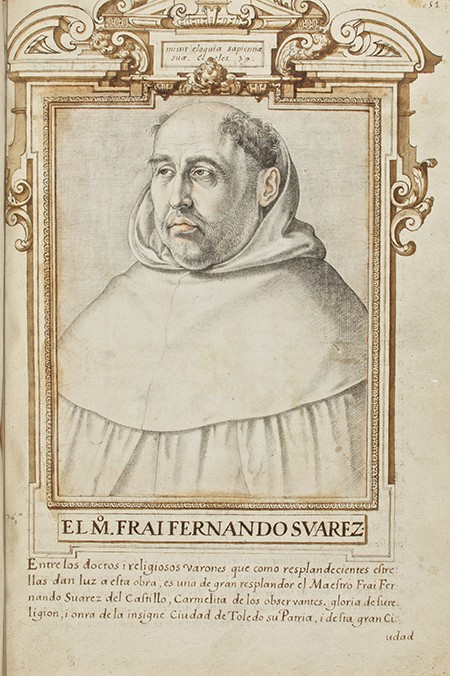A drawing by the Spanish painter and art theorist Francisco Pacheco (1564–1644), completed in 1606, shows the Sevillian Carmelite monk Fray Fernando Suárez at age fifty-nine. The artist has depicted the body slightly turned to the left so that viewers can appreciate aspects otherwise easily masked. The angle affords a view of the chubby contours of Suárez’s face along with the asymmetry of his eyebrows, his saggy eyelids and etched crow’s feet, the matching reddish color of lips and ear. “The parts of his face,” runs a line in the text below, “shall not be told by the pen, as it is this portrait that tells them.” From the late 1590s to his death in 1644, Pacheco worked on a book concerning the “description of true portraits,” for which he produced more than 150 drawings, collecting along the way a massive amount of documentation. Originally intended as a theorization of destreza, or bodily skill, the book’s focus had soon shifted toward the question of truth (and truthfulness) in depiction. Pacheco had begun to focus on the flaw, the facial trait or natural particular that was then considered nonessential and without meaning. He had begun to probe habits of recognition, interrogating the relationship between perception and expectation and between pictorial and textual description. Intriguingly, at a time when debates about the relationship between seeing and knowing raged across Europe, the Spanish artist was interested in the technical and material aspects of the highly fraught certeza del parecido, the “certainty of likeness.” How could Velázquez’s master see the period’s quest for certainty as so naturally aligned with the making and viewing of portraits?
Histories of early modern Spanish art theory typically feature artists like Pacheco as readers rather than makers and as concerned with social recognition and religious orthodoxy rather than with matters of epistemology. These are narratives in which skepticism or the frailties of sight rarely drive art writers’ attention; nor do they usually discuss the portrait. By the early seventeenth century, however, Spanish artists’ engagement with the portrait, in text and with their hands, often registers an interest in a new type of artifact—both object and concept, technology and metaphor—suggesting that it was only by thinking with it that vexed problems such as naturalism, style, or the contours of knowledge in depiction came to seem critically approachable. The portrait was in these instances neither a genre nor a representation but an epistemic tool—one that, I argue, had profound ramifications in the period’s concern with facture and its relationship to evolving notions of discernment and truth.
My dissertation explores the intersection of religious, antiquarian, naturalist, and artistic endeavors that turned the portrait into a central component of early modern Spanish learned empiricism, and with it, early projects to theorize painting. Focusing largely on Seville at the turn of the seventeenth century, it traces the variety of practices and interactions—across trading routes, fields of knowledge, intellectual communities, and forms of expertise—crucial to the forging of this new category of image. During the latter half of the sixteenth century, a growing array of images came to be associated with the notion of retrato. As the term migrated from the realm of the notary to that of the learned scholar, its meaning condensed into a particular function: retrato primarily denoted a faithful replica, that is, a copy invested in providing evidence. It was thus integral to work in sacred history, archaeology, and the study of nature but also to juridical practice and artistic connoisseurship. Indeed, for the first time in Renaissance Spain, reproductive objects of this kind—of things like recently unearthed relics or newly discovered plants—were produced and circulated with the sole purpose of reaching experts who would examine them.
Retratos were often related to contested rather than established objects of inquiry. As I have come to realize during my year in residence at CASVA, they exposed in novel ways the troubled contingencies of made-ness, generating through both their production and inspection new insights into the instability of vision and its main connoisseurial application, recognition. In Seville, where old and new habits of exchange kept the city’s artisanal and intellectual circles tightly connected to the Atlantic, Italy, and Flanders, these objects also ended up sparking sustained discussion over the uses and abuses of learned credulity and skepticism. The study of retratos forces us to look into the intertwined histories of forgery, restoration, artisanal know-how, and erudition. In doing so, it also offers new perspectives on why Spanish artists like Pacheco or Pablo de Céspedes (c. 1538–1608), two of the main protagonists of my dissertation, came to think about painting in the peculiar and sophisticated ways they did.
